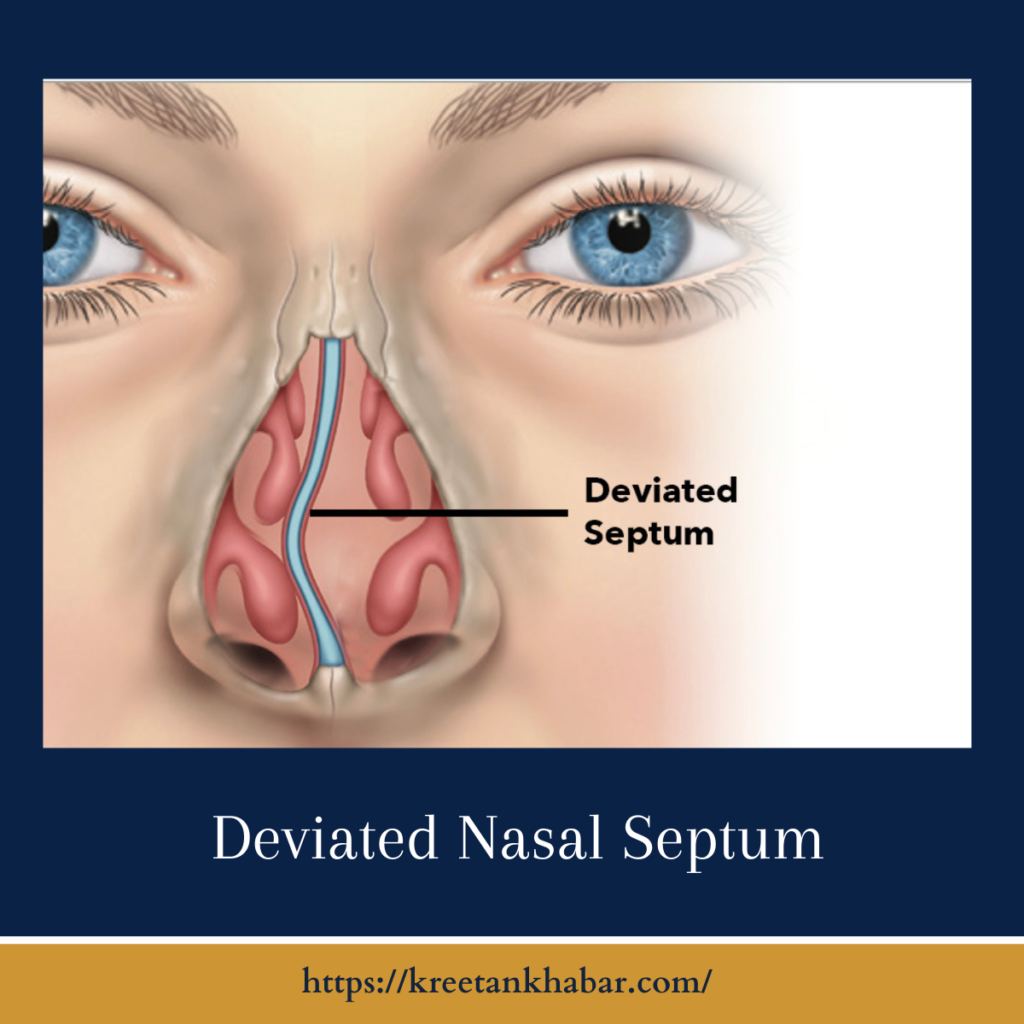Deviated Nasal Septum: Understanding Causes, Symptoms, and Treatment Options
Introduction:
The human body is a marvel of intricate design, but sometimes, even the smallest deviations can lead to significant health issues. One such common condition that affects many individuals is a deviated nasal septum. Often overlooked, this misalignment of the thin wall between the nostrils can cause a variety of symptoms and impact one’s quality of life. In this article, we will explore the causes, symptoms, and treatment options for a deviated nasal septum.

Understanding the Nasal Septum:
The nasal septum is a cartilage and bone structure that divides the nasal cavity into two halves. Ideally, it should be centrally aligned, allowing for smooth airflow. However, a deviated nasal septum occurs when this partition is displaced to one side, obstructing the nasal passages.
Causes:
Deviated nasal septums can be congenital, meaning present from birth, or develop later in life due to injury or trauma. Accidents, sports injuries, or even the birthing process can contribute to the misalignment. Additionally, the natural aging process may also cause changes in the nasal structure.
The points of causes are given below:
Symptoms:
The symptoms of a deviated nasal septum can vary in severity and may include:
- Nasal Congestion: Difficulty breathing through one or both nostrils is a common complaint.
- Facial Pain: Discomfort or pain, particularly on the side of the deviated septum, can occur.
- Frequent Nosebleeds: The misalignment may lead to dryness and irritation, increasing the likelihood of nosebleeds.
- Snoring or Sleep Apnea: Airflow obstruction can contribute to snoring and, in severe cases, sleep apnea.
- Recurrent Sinus Infections: Reduced airflow and drainage may lead to sinus infections.
Treatment Options:
Treatment for a deviated nasal septum depends on the severity of symptoms and their impact on the individual’s daily life. Common options include:
- Nasal Decongestants: Over-the-counter nasal sprays or drops may provide temporary relief from congestion.
- Antihistamines: These can help manage symptoms related to allergies that may exacerbate nasal issues.
- Surgery (Septoplasty): In cases where symptoms persist or are severe, surgical intervention may be recommended. Septoplasty is a common and effective procedure to straighten the nasal septum and improve airflow.
- Home Remedies: Humidifiers, saline nasal sprays, and warm compresses can alleviate symptoms and promote nasal health.
More points of treatment option of deviated nasal septum:
-
Observation and Lifestyle Modifications:
- In mild cases, a watch-and-wait approach may be recommended.
- Lifestyle changes, such as using a humidifier or avoiding environmental irritants, can help manage symptoms.
- Nasal Decongestants:
- Over-the-counter nasal sprays or drops can provide temporary relief by reducing nasal congestion.
- However, prolonged use should be avoided to prevent rebound congestion.
- Antihistamines:
- Useful for managing symptoms associated with allergies that may exacerbate nasal issues.
- They can help alleviate congestion, runny nose, and sneezing.
- Nasal Corticosteroids:
- Prescription or over-the-counter nasal sprays containing corticosteroids can reduce inflammation and improve airflow.
- Regular use may be recommended for long-term management.
- Saline Nasal Irrigation:
- Rinsing the nasal passages with a saline solution helps clear mucus and reduce nasal dryness.
- A neti pot or saline nasal spray can be used for this purpose.
- Oral Steroids:
- In severe cases with significant inflammation, a short course of oral steroids may be prescribed to reduce swelling and improve symptoms.
- Surgery (Septoplasty):
- Septoplasty is a common and effective surgical procedure to straighten the nasal septum.
- It is considered when conservative measures fail, and symptoms persist or significantly impact quality of life.
- Turbinate Reduction:
- In some cases, surgery may involve reducing the size of nasal turbinates, structures that help warm and humidify inhaled air.
- This can further improve nasal airflow.
- Balloon Sinuplasty:
- A less invasive procedure that uses a small balloon to open blocked sinuses and improve drainage.
- It may be performed alongside septoplasty for comprehensive treatment.
- Postoperative Care:
- After surgery, patients are advised to follow specific postoperative care instructions.
- This may include using saline sprays, avoiding strenuous activities, and attending follow-up appointments.
- Alternative Therapies:
- Some individuals find relief through complementary therapies like acupuncture or chiropractic adjustments.
- While not scientifically proven, these options may be considered in conjunction with conventional treatments.
-
Regular Follow-ups:
- Regardless of the chosen treatment, regular follow-up appointments with a healthcare provider are essential.
- Monitoring the effectiveness of the chosen treatment plan ensures proper management of the deviated nasal septum over time.
Conclusion:
A deviated nasal septum is a common condition that, while often manageable, can significantly impact an individual’s daily life. Seeking medical advice is crucial for an accurate diagnosis and appropriate treatment. Whether through lifestyle adjustments, medications, or surgical intervention, there are effective ways to address the challenges posed by a deviated nasal septum and restore the free flow of air through the nasal passages.
Read also : Exploring the Delightful Boost of the Green Tea Shot 2023